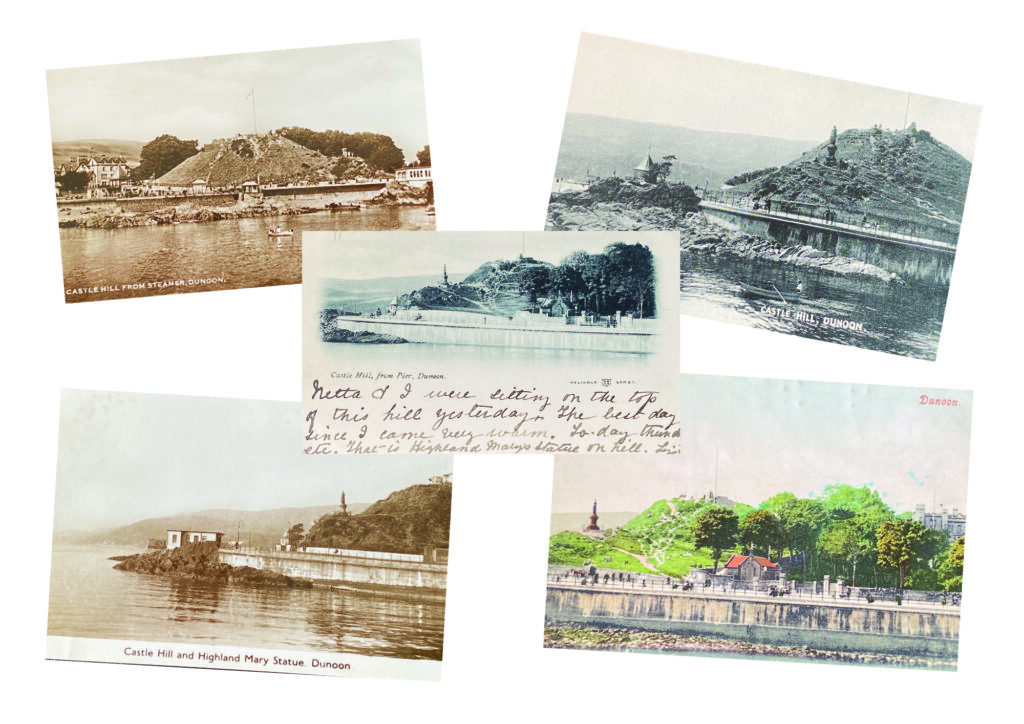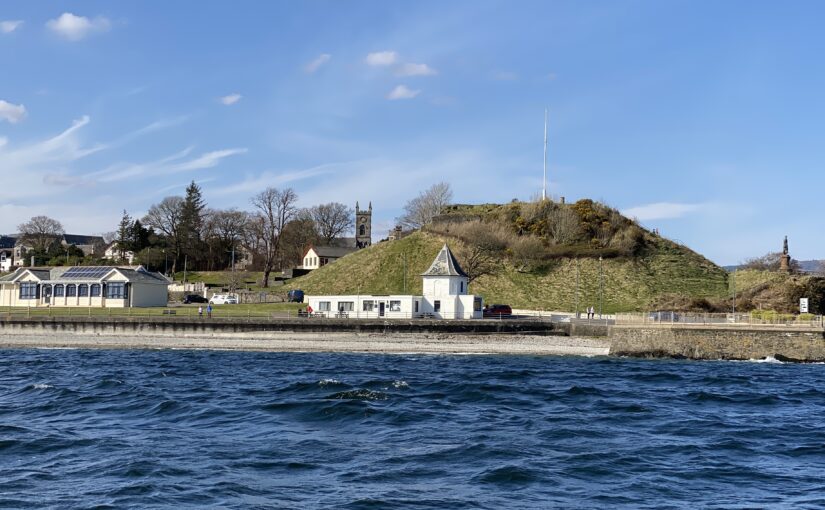Dr Manda Forster of DigVentures and independent historical researcher Dr Louise Turner set the scene for our next project getting under way – the geophysical survey of Dunoon Castle, Argyll.
On Friday 21 July, members of the public will be joining archaeologists from DigVentures to investigate the remains of Dunoon Castle (NGR: NS 1796 7868; Canmore ID: 40729). The medieval castle site occupies a prominent, partly-modified hill within landscaped gardens which overlook the seafront in the coastal town of Dunoon, Argyll. The town itself is located towards the south end of the Cowal Peninsula at the narrowest point of the Firth of Clyde. This part of the peninsula forms the western shore of a distinct body of water – the north to south oriented sea loch named ‘Holy Loch’ – which adjoins the lower reaches of the Clyde that continue onwards following a more east to west course past Toward Point in the south.
Subscribe to our quarterly newsletter
This community-based investigation, supported by a grant from the Castle Studies Trust, aims to raise awareness of the significant archaeology which sits in the town. Working with local people, the team will explore the archaeology of the site to add detail to the few visible earthworks at the top of the mound with geophysical and topographic survey, including photographic building recording and a drone survey. To get families involved, we’re hosting tours and a character trail around the site, as well as running activities with the Castle House Museum inspired by postcards of the castle and a nod to the town’s history as a visitor destination for those heading on a trip ‘doon the watter’. The project is a collaborative venture by DigVentures with Dunoon Area Alliance, Dunoon CARS and the Castle House Museum which aims to raise awareness of the significant history of the site and find out more about the buried archaeology through a programme of geophysics.
The remains of Dunoon Castle, and the hillock on which it stands, are a designated Scheduled Monument (HES ID: SM5450). The site has a long and complex history linked inextricably with its prominent strategic location in the Firth of Clyde – and with the success of the town itself. The castle hill played a crucial role in the military history of the Clyde Coast during both world wars, and in the town’s success as a holiday destination during the later nineteenth and early twentieth centuries. As a result, the archaeology of the hill extends beyond the medieval castle itself to encompass built elements associated with the nineteenth century landscaped park and gardens.

Little is known or evidenced for early occupation at the site, although ‘seven or eight’ cist burials were discovered in the grounds of Castle House in 1822, during its construction. The description of the burials is comparable with nearby examples of medieval long cists from Innellan (just south of Dunoon), which have been radiocarbon dated to the late tenth century. Early ecclesiastical activity would not be unexpected, and could focus around the site of the modern Dunoon High Kirk. Historically, the earliest documentary mention of the castle was made in 1257 in reference to ‘John of Dunown,’ who was steward to the Earl of Lennox in 1253. From then on, the castle and its associated people, which includes two successive bishops (mid-fifteenth century) and a visit from Mary Queen of Scots in 1563, take a prominent role in the region. The Campbells acquired Dunoon Castle in the 14th century when Sir Colin Campbell, 3rd Lord of Lochow, was granted title of ‘Hereditary Keeper of Dunoon Castle’. The Campbells then retained Dunoon Castle throughout the remainder of the medieval period, and beyond. A document dated 15th January 1472 outlines their responsibility for the upkeep of the castle and the maintenance of its fabric, as well as the power to appoint constables, porters, jailors, watermen and other officers. By the end of the medieval period, Campbell influence was growing ever greater in this SW corner of the Cowal peninsula but, following the grisly Dunoon Massacre* in 1646, the castle seems to have been deserted. After its abandonment, stone from Dunoon Castle was probably used locally for housing, including for the construction of Castle House and associated structures (now the location of the museum).

The site itself retains its nineteenth century character, having been retained within a larger area of landscaped gardens. The planned investigations have the potential to explore whether there are undiscovered features relating to earlier occupation of the castle mound (Phase 1) and provide an updated record of the extant remains which relate directly to the medieval castle (Phase 2). In delivering the survey, we also hope to further refine our understanding of how the configuration of the gardens and landscaped grounds may have changed from the early nineteenth century to the present (Phase 3) and to record any extant evidence for the twentieth century coastal defences (Phase 4).
Subscribe to our quarterly newsletter
*The 17th century was brutal for the clans in the area as it was across Scotland, with a backdrop of war and switching allegiances. Within this context, the Lamonts and Campbells found themselves on opposing sides, and the Lamonts invaded Campbell lands killing 33 men, women and children. In 1646, the Campbells struck back, attacking the Lamont castles of Ascog and Toward (just down the coast) and capturing around 100 Lamonts who were sentence to death and executed. Thirty-six of the highest ranking were hanged from a tree in the graveyard. A memorial now stands to Clan Lamont at Tom A’Mhoid road.
